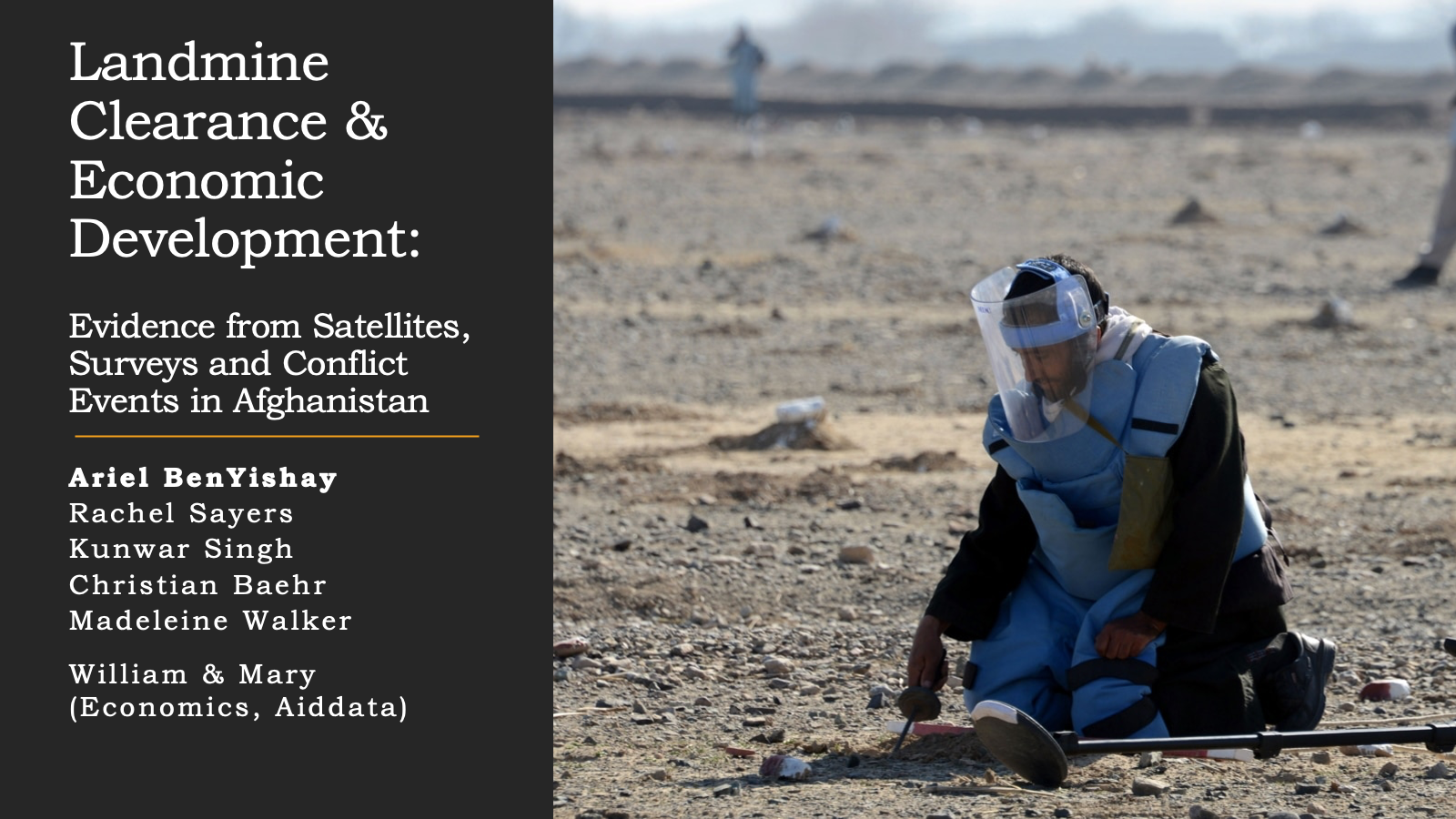
Landmine Clearance and Economic Development: Evidence from Nighttime Lights, Multispectral Satellite Imagery, and Conflict Events in Afghanistan
Date Published
May 12, 2023
Authors
Christian Baehr, Ariel BenYishay, Rachel Sayers, Kunwar Singh, Madeleine Walker
Publisher
Citation
Baehr, C., BenYishay, A., Sayers, R., Singh, K., and Walker, M. (2023). Landmine Clearance and Economic Development: Evidence from Nighttime Lights, Multispectral Satellite Imagery, and Conflict Events in Afghanistan. Working Paper #125. Williamsburg, VA: AidData at William & Mary.
Abstract
The widespread prevalence of unexploded landmines in many countries leads to thousands of deaths and injuries annually. In addition, landmines may impede the flow of goods and people; this not only restricts trade and labor flows, but also hinders access to schools and medical care. Moreover, landmines can block the productive use of contaminated land. We study the clearance of more than 15,000 hazardous areas in Afghanistan carried out since 1992, obtaining precise geographic boundaries for these areas. We identify a window during which a policy shift in clearance targeting created plausibly exogenous variation in the timing of clearance, which we study using a two-way fixed effects panel design. The clearance of hazardous areas leads to changes in land use observed using multispectral, moderate-resolution Landsat-series imagery, as well as to increases in economic activity reflected in nighttime lights data. Our precise clearance data and satellite imagery allows us to observe the shifts occurring even in the small towns and villages that comprise most of our sample. We also find reductions in conflict risks due to the clearance of hazardous areas. Landmine action efforts thus appear to have substantial economic effects even in areas with ongoing conflict risks.









